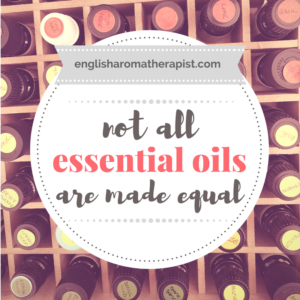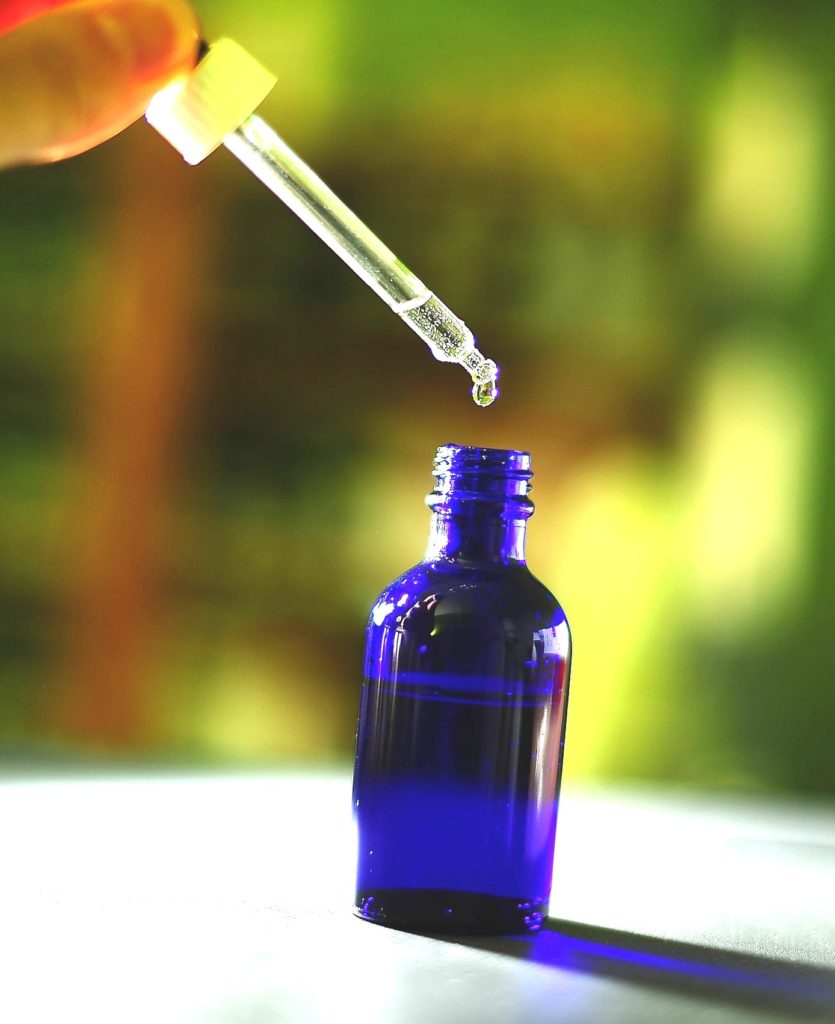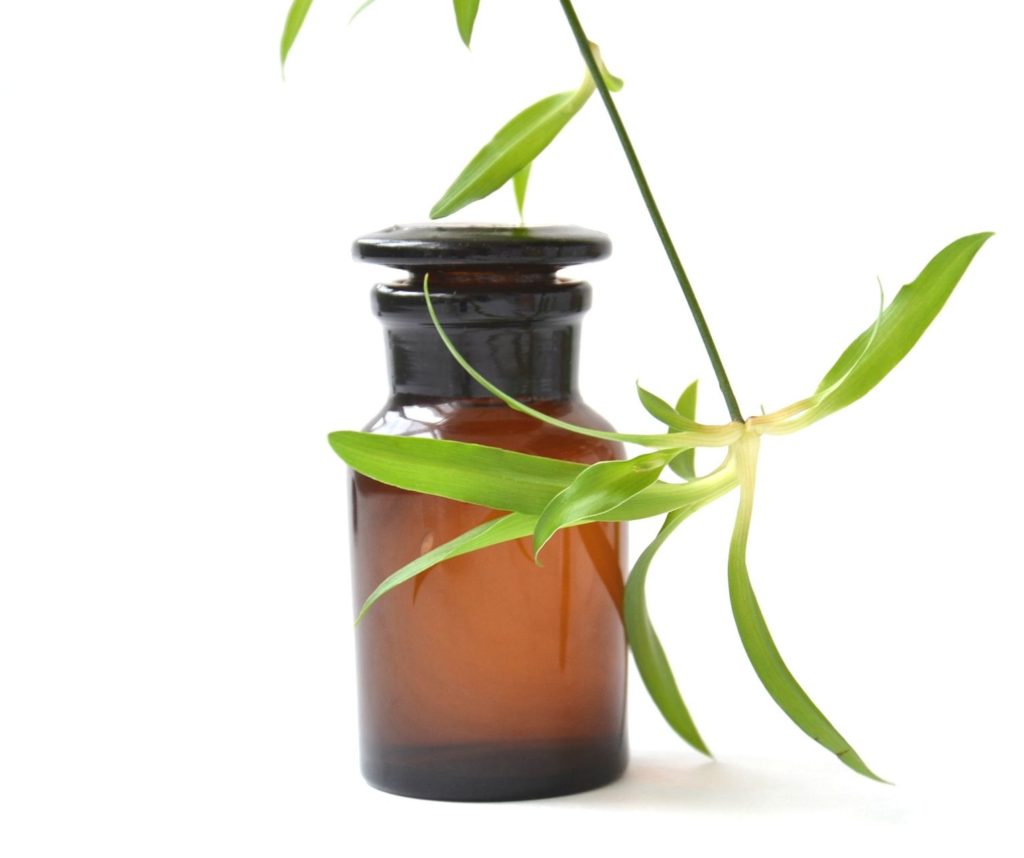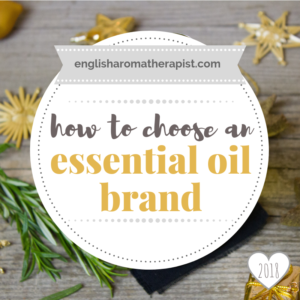Not All Essential Oils Are Equal

I’ve decided to write about a topic that often crops up on social media – essential oil quality. Or, more specifically, why not all “essential oils” are made equal.
This is a potentially thorny issue, which never fails to provoke a heated debate. Online conversations can quickly descend into arguments, and it’s not always easy to differentiate between fact and fiction.
I don’t claim to have all the answers, but what I do know is this: not all “essential oils” available to buy are of equivalent quality.
To some of you, this might appear to be stating the obvious. But there is still much confusion about this issue.
I have to say, it makes my heart sink when I see essential oils for sale that are clearly fake. When I see “Rose” and “Jasmine” essential oil priced the same as Lemon and Sweet Orange, I walk away. Since starting this blog, a lot of brands contact me to ask about collaborations, but I will never endorse a brand I don’t believe in.
As essential oil popularity grows, so does the number of companies looking to exploit the wellness trend. Some are knowingly selling poor-quality products, others are unwittingly importing them from unscrupulous wholesalers.
The myth of therapeutic grade
As I’ve explained before, the term “certified therapeutic grade” is meaningless and nothing more than a self-awarded marketing term. There is no independent body that certifies whether essential oils are therapeutic grade or not.
In theory, any 100% pure essential oil is therapeutic grade. Despite the MLM claims, there are plenty of companies out there selling essential oils that are pure and therapeutic quality. In fact, a lot of them will be sourcing from the same suppliers.
So all oils are fine?
NO – and this is where the confusion lies. While it’s true that many brands offer 100% pure essential oils, it’s also true that many essential oils are NOT what they appear to be. In fact, it’s estimated that as much as 70% of essential oils on the market are adulterated to some degree (source: Essential Validation Services).
The contents of the bottle do not always match up to what’s stated on the label. Don’t be fooled by misleading words like “natural” and “pure”. There are many reports of essential oils that have turned out to be fake, or at least partly synthetic (see Essential Oil University for some interesting case studies).

WHY DOES THIS HAPPEN?
- Sometimes this is a genuine mistake on behalf of the supplier. There have been cases where reputable brands experienced glitches, and worked hard to rectify the situation as quickly as possible.
- Sometimes this is due to uninformed procurement. It’s easy to see how a retailer may be tempted to import cheap wholesale essential oils for a bargain price, without understanding the risks. To the untrained eye, 10kg of lavender essential oil is 10kg of lavender essential oil, right…? If you’re not trained in aromatherapy, you probably won’t know there’s much of a difference. On sites like eBay and Amazon, it’s a race to the bottom on price. If a seller can source their raw materials that little bit cheaper than everyone else, they can offer a competitive price (Let’s be honest – when you’re shopping online, how often do you “sort by lowest price”?)
- Sometimes it’s simply due to unethical trading. Whatever market you’re in, there’ll always be unscrupulous sellers that are willing to mislead their customers.
What’s the difference?
In aromatherapy, we only use 100% pure essential oils. Synthetic fragrance oils are not used for therapeutic purposes. In fact, some of the cheap synthetic oils shouldn’t be used on the skin at all.

What to look out for
There are various different types of “fake essential oils”:
- Pure essential oils are sometimes stretched with a carrier oil, in order to keep the cost down. This is only acceptable when stated accordingly on the label (for example, Jasmine is often sold in a 5% dilution). Cheaper brands will often stretch all their essential oils with a carrier, but fail to mention it on the label. This allows them to sell the essential oils at a much lower price.
- Pure essential oils can be mixed with cheaper essential oils, to lower the overall cost price. For example, expensive Neroli oil can be mixed with Petitgrain to create a much cheaper product. Again, this is acceptable if clearly stated on the label. But if often isn’t – see here for an example.
- Sometimes, a cheaper substitute is used for the entire essential oil. For example, cheap Lavandin is often used in place of true Lavender (see report here). Cheap essential oils labelled “Peppermint” can actually be Cornmint, which costs half the price (see report here). A bottle of “Melissa” can turn out to be Lemongrass. So it’s true to say that it’s “100% essential oil” – but it’s not the essential oil that’s stated on the label.
- Some so-called “essential oils” contain synthetic ingredients – either partly or fully. If the ingredients are 100% synthetic then it’s just a fragrance oil, not a true essential oil. Recently, Dr Pappas (Essential Oil University) tested Lavender essential oils from Art Naturals and Radha Beauty and found them to be around 70% synthetic. It’s likely that there are other equally synthetic brands on Amazon that haven’t yet been exposed.
What can we do?
Be careful where you buy your essential oils. In general, I wouldn’t recommend buying oils from eBay or Amazon – although there are reputable sellers on there, it’s not always easy to filter out the rubbish. It’s far better to buy directly from the source, or from a reputable retailer – that way, you can be sure you’re getting the real deal.
Avoid buying essential oils from supermarkets and market stalls. You might as well save your money and buy two or three quality essential oils from a proper brand, rather than loads of cheap ones.
Don’t fall into the trap of going to the other extreme! There is a middle ground between buying cheap rubbish from Walmart and paying over the odds for MLM oils. There are plenty of reputable suppliers that offer quality oils at reasonable prices.
FIND OUT MORE:
What To Read Next: How to Choose a Brand
Follow me on...
Share this on...

